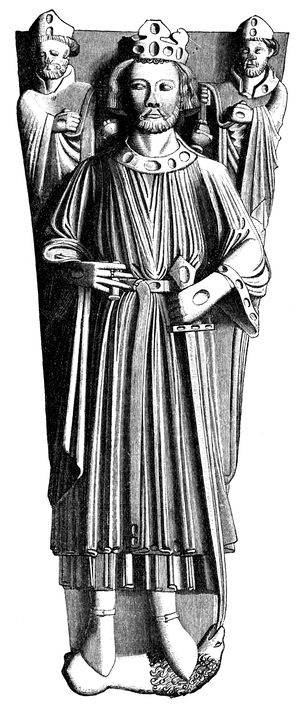
John was the king of England from 1199 until his death in 1216. He lost the Duchy of Normandy and most of his other French lands to King Philip II of France, resulting in the collapse of the Angevin Empire and contributing to the subsequent growth in power of the French Capetian dynasty during the 13th century. The baronial revolt at the end of John's reign led to the sealing of Magna Carta, a document considered an early step in the evolution of the constitution of the United Kingdom.
The Duchy of Anjou was a French province straddling the lower Loire. Its capital was Angers, and its area was roughly co-extensive with the diocese of Angers. Anjou was bordered by Brittany to the west, Maine to the north, Touraine to the east and Poitou to the south. The adjectival form is Angevin, and inhabitants of Anjou are known as Angevins. In 1482, the duchy became part of the Kingdom of France and then remained a province of the Kingdom under the name of the Duchy of Anjou. After the decree dividing France into departments in 1791, the province was disestablished and split into six new départements: Deux-Sèvres, Indre-et-Loire, Loire-Atlantique, Maine-et-Loire, Sarthe and Vienne.

Arthur I was 4th Earl of Richmond and Duke of Brittany between 1196 and 1203. He was the posthumous son of Geoffrey II, Duke of Brittany, and Constance, Duchess of Brittany. His father, Geoffrey, was the son of Henry II, King of England.
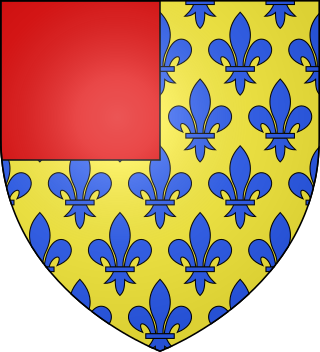
Guy of Thouars was the third husband of Constance, Duchess of Brittany, whom he married in Angers, County of Anjou between August and October 1199 after her son Arthur of Brittany entered Angers to be recognized as count of the three countships of Anjou, Maine and Touraine. He was an Occitan noble, a member of the House of Thouars. He is counted as a duke of Brittany, jure uxoris, from 1199 to 1201.

The term Angevin Empire describes the possessions held by the House of Plantagenet during the 12th and 13th centuries, when they ruled over an area covering roughly all of present-day England, half of France, and parts of Ireland and Wales, and had further influence over much of the remaining British Isles. It may be described as an early example of a composite monarchy. The empire was established by Henry II of England, who succeeded his father Geoffrey as Duke of Normandy and Count of Anjou. Henry married Eleanor of Aquitaine in 1152, acquiring the Duchy of Aquitaine, and inherited his mother Empress Matilda's claim to the English throne, succeeding his rival Stephen in 1154. Although their title of highest rank came from the Kingdom of England, the Plantagenets held court primarily on the continent at Angers in Anjou, and at Chinon in Touraine.
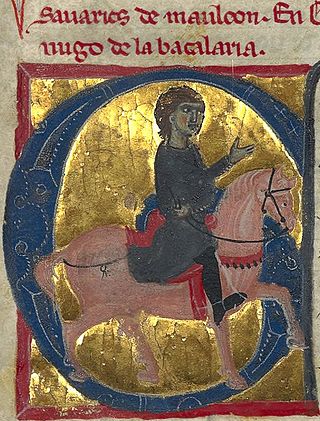
Savari de Mauléon was a French soldier, the son of Raoul de Mauléon, Viscount of Thouars and Lord of Mauléon.
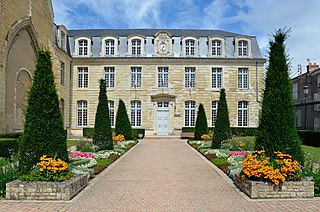
Thouars is a commune in the Deux-Sèvres department in western France. On 1 January 2019, the former communes Mauzé-Thouarsais, Missé and Sainte-Radegonde were merged into Thouars.
Andre de Chauvigny (1150–1202) was a Poitevin knight in the service of Richard I of England. He was the second son of Pierre-Hélie of Chauvigny and Haois of Châtellerault. Haois was the great-aunt of King Richard making Andrew and Richard second cousins.
The Seneschal of Anjou was an officer of an aristocratic household assigned to manage the domestic affairs of the lords of Anjou. During the course of the twelfth century, the seneschalship also became an office of military command.
Robert of Thurnham was an English soldier and administrator. The namesake of his landowner father, he was the younger brother of Stephen of Thurnham. Robert made his reputation in connection with the conquest of Cyprus in 1191 during the Third Crusade. On order of King Richard I, he led half the fleet in that battle. Subsequently, he was responsible for controlling the island when the Crusaders moved on, first jointly with Richard de Camville and then independently, when he defeated a group of Cypriot rebels. After he left Cyprus, Robert became more closely identified with Richard I. As the king's familiaris, he carried Richard's equipment from the Holy Land to England. When Richard I was captured in 1192 in Vienna, among the terms of his release was the presentation of men to stand as "pledges" that the ransom would be paid. Robert was among these hostages, though evidently not for long, as he was back by the king's side in 1194 at Poitiers. Appointed Seneschal of Anjou, he served in France with Richard I, primarily in Anjou and Normandy, throughout the rest of Richard's reign. At around the same time, he was also appointed High Sheriff of Surrey, but he did not return to England until after Richard's death. In 1196, he led troops at Richard's behest into Brittany on an unsuccessful attempt to capture the child Duke of Brittany Arthur, whose mother Constance was resistant to Richard's control. In 1197, King Richard arranged for Robert to marry Isabella Fossard, daughter and heiress of the powerful Yorkshire baron William Fossard. The Fossard inheritance included the castle, honor, and lordship of Mulgrave with 34.5 attached knight's fees.
Marguerite de Sablé, Dame de Sablé, was a French noblewoman and one of the wealthiest heiresses in the counties of Anjou and Maine. She was the eldest daughter of Robert IV de Sablé, and the wife of William des Roches, Seneschal of Anjou, who two years after his marriage to Marguerite became one of the greatest barons in Anjou and Maine, her considerable inheritance having passed to him upon her father's death in 1193.
Jeanne des Roches, Dame de Sablé was a French noble heiress, ruler of de baronies of La Suze, de Briollay, de Mayet, de Loupeland, de Chateauneuf-sur-Sarte, de Genneteil, de Precigné, de Agon, and de Craon; and the suo jure seneschal of Anjou, from 1222. The seneschalship passed to her husband, Amaury I, Sire de Craon, as well as the vast Sablè barony.

The County of Anjou was a French county that was the predecessor to the Duchy of Anjou. Its capital was Angers, and its area was roughly co-extensive with the diocese of Angers. Anjou was bordered by Brittany to the west, Maine to the north, Touraine to the east and Poitou to the south. Its 12th century Count Geoffrey created the nucleus of what became the Angevin Empire. The adjectival form is Angevin, and inhabitants of Anjou are known as Angevins. In 1360, the county was raised into the Duchy of Anjou within the Kingdom of France. This duchy was later absorbed into the French royal domain in 1482 and remained a province of the kingdom until 1790.

The Invasion of Normandy by Philip II of France were wars in Normandy from 1202 to 1204. The Angevin Empire fought the Kingdom of France as well as fighting off rebellions from nobles. Philip II of France conquered the Anglo-Angevin territories in Normandy, resulting in the Siege of Château Gaillard. The Normandy Campaigns ended in a victory for France when the Anglo-Angevin territory was greatly diminished.

The Battle of Mirebeau was a battle in 1202 between the House of Lusignan-Breton alliance and the Kingdom of England. King John of England successfully smashed the Lusignan army by surprise.

The siege of Roche-aux-Moines was an engagement of the Anglo-French War (1213-1214). King John of England besieged the castle but had to retreat in the face of King Philip Augustus' son, Prince Louis.

Aimery IV viscount of Thouars was a companion of William the Conqueror on his Invasion of England in 1066.

The Capet–Plantagenet feud was a series of conflicts and disputes that covered a period of 100 years (1159–1259) during which the House of Capet, rulers of the Kingdom of France, fought the House of Plantagenet, rulers of the Kingdom of England, over the Plantagenet-held Angevin Empire which at its peak covered around half of the territory within France. Some historians refer to this series of events as the "First Hundred Years' War".
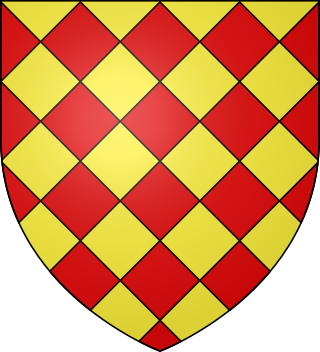
Amaury IV of Craon, Lord of Craon, Chantocé, Ingrandes, Briollé, Châteauneuf-sur-Sarthe, Précigné and Sablé, Sainte-Maure, Nouâtre, Pressigny and Marcillac, Châteauneuf-sur-Charente and Jarnac, was a French noble, who was part of the Hundred Years' War.











